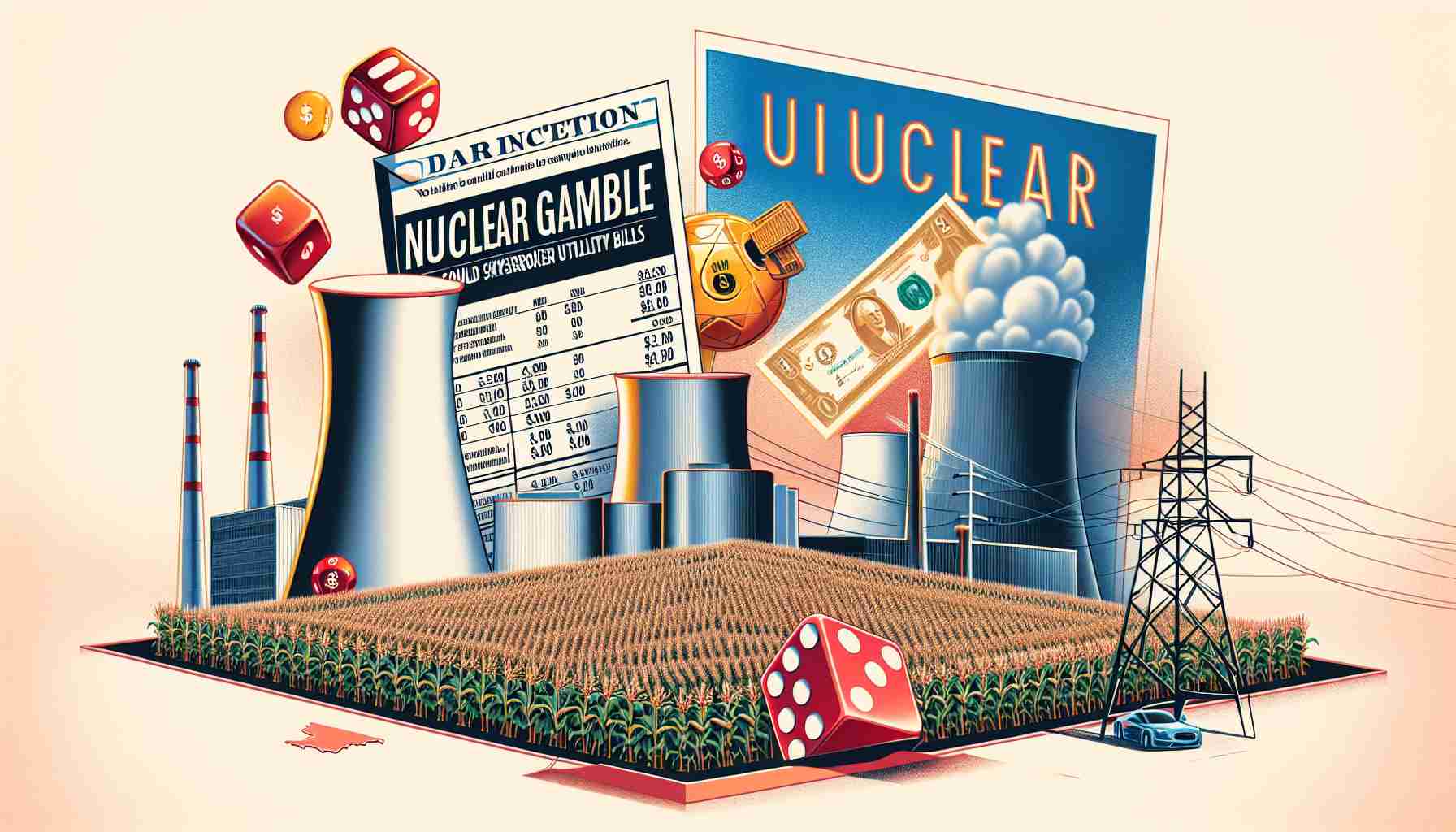- Indiana faces urgent infrastructure updates, impacting utility bills significantly.
- The state considers shifting costs of small modular nuclear reactor (SMR) projects to ratepayers, despite their unproven track record.
- Past nuclear projects, like Nuscale’s in Idaho, highlight financial risks, with costs doubling from $5 billion to $9 billion.
- Renewable energy offers a viable alternative, with Indiana’s renewables currently at just 14%, indicating substantial growth potential.
- Investments in tested renewable technologies could help maintain low costs and avoid speculative risks associated with SMRs.
Prepare for a shock on your utility bills, says Indiana House Utilities Committee Chairman Ed Soliday, as the state faces urgent infrastructure upgrades. Investment in our energy grid can no longer wait, but the looming question is: at what cost?
Indiana finds itself at a pivotal crossroads. Recent legislative moves propose shifting the significant costs of small modular nuclear reactor (SMR) projects to the ratepayers—a plan shrouded in uncertainty. SMRs might sound cutting-edge, yet they’re largely unproven with no operational models in the U.S. and only a handful worldwide. They remain largely theoretical, with financial risks underscored by past nuclear endeavors.
Take, for instance, the ambitious SMR project by Nuscale Power in Idaho. Initially budgeted at $5 billion, it was dismantled with costs soaring to $9 billion. South Carolina’s experience with Dominion Energy looms large as well, where customers are left to foot the $6 billion bill for a failed venture. The future isn’t clear-cut; Hoosier ratepayers can’t afford speculative gambles.
Craig Piercy, CEO of the American Nuclear Society, acknowledges the uncertainties of pioneering technologies like SMRs. While tech giants like Meta or Amazon may absorb such risks, everyday Hoosiers cannot.
What’s the alternative? Boosting Indiana’s renewable energy potential could check costs. Increasing sources from renewables coupled with smart energy management, such as virtual power plants, offers immediate benefits without soaring costs. With renewables currently providing just 14% of the state’s energy, there is significant room for growth without threatening grid stability.
In confronting today’s energy crisis, wise investments in proven renewable technologies are paramount to maintaining low costs for Indiana residents. The futuristic promise of SMRs will have its day, but for now, Hoosiers should avoid bearing unnecessary risks. Embrace the practical solutions today, and let future marvels prove their worth in time.
The Chilling Reality: Hoosiers Brace for Higher Utility Bills Amid Energy Turmoil
Understanding Indiana’s Utility Price Surge: What’s in Store?
The energy landscape in Indiana is on the brink of evolution, driven by urgent infrastructure needs and the potential introduction of small modular nuclear reactors (SMRs). As Indiana contemplates shifting the financial burden of these projects onto ratepayers, understanding the implications becomes crucial.
What Are SMRs and Why Are They Controversial?
Small Modular Reactors (SMRs) are a newer, unproven class of nuclear power technology, which promise to deliver safer and more efficient energy. However, they are still largely theoretical with no operational models within the United States and only a few globally.
Pros and Cons of SMRs:
– Pros:
– Potential to provide reliable, low-carbon energy.
– Smaller size allows for flexibility in deployment.
– May offer increased safety features compared to traditional nuclear reactors.
– Cons:
– High financial risk as proven by previous failed projects.
– Uncertain integration into current energy systems.
– Potential cost overruns can disproportionately impact consumers.
Related Link:
– Learn more about nuclear energy advancements: American Nuclear Society
Lessons from Past Nuclear Endeavors
The SMR project by Nuscale Power in Idaho initially faced severe cost overruns, ballooning from an estimated $5 billion to $9 billion. In South Carolina, Dominion Energy’s project failure left customers holding a $6 billion bill. Such examples highlight the financial risk involved in investing in nascent technologies.
Could Renewables Be the Solution for Indiana?
While SMRs represent a futuristic energy promise, Indiana might find more immediate benefits by exploring enhanced renewable energy solutions.
Renewable Energy Benefits:
– Renewable Energy Share: Currently only 14% of Indiana’s energy comes from renewables, providing a significant opportunity for expansion.
– Stability and Costs: Proven lower risk of financial overruns compared to nuclear projects.
– Sustainability: Supports long-term environmental goals.
Developing sources such as solar, wind, and virtual power plants can help stabilize utility costs and make the energy sector more sustainable for Indiana’s consumers.
Related Link:
– Explore innovations in renewable energy: National Renewable Energy Laboratory
Security Aspects and Innovations in Renewable Energy
Innovation and security go hand-in-hand with renewable energy solutions. Advances in smart grids, energy storage, and virtual power plants can enhance grid security and efficiency.
Security and Tech Insights:
– Smart Grids: Enhance resilience against outages and attacks.
– Energy Storage: Allows for better energy management and reduces dependency on a single power source.
– AI and Machine Learning: Improve energy distribution and forecast energy needs efficiently.
Market Predictions and Future Trends
Market analysis indicates that investment in renewable technologies is projected to grow as states recognize their potential to satisfy consumer demand while minimizing risks. Virtual power plant technologies and innovations will likely be trends to watch.
Conclusion: Embrace Proven Solutions Today
Hoosiers face a critical choice between the speculative risks of SMRs and the immediate, tangible benefits of renewables. As Indiana navigates its energy crisis, prioritizing economically sound and environmentally supportive options is key. Let future breakthroughs prove their worth in due course, while embracing tested solutions to lay a stable foundation today.
Related Link:
– Stay updated on energy market trends: U.S. Energy Information Administration
